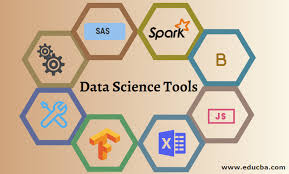Strategic Resource Management: Developing Workforce

Strategic Resource Management (SRM) is an overarching term that refers to the strategic process of acquiring, managing, and deploying an organization’s human, financial, technological, and natural resources in order to achieve its goals. SRM is a holistic approach that considers an organization’s overall strategy and objectives and aligns its resources accordingly.
The goal of SRM is to ensure that an organization’s resources are being used most efficiently and effectively possible. This includes maximizing the value of each resource and minimizing waste and duplication. SRM also involves ensuring that resources are appropriately allocated and used in line with the organization’s strategic objectives. You can learn about Human Resource Management effectively through Human Resource Management Courses Great Learning offers and earn a free certificate on completing the course.
SRM is a critical function in any organization and can significantly impact an organization’s bottom line. In order to be successful, SRM must be integrated into an organization’s overall strategy and decision-making process. It is also essential to understand the organization’s resources and how they can be best used to achieve its goals.
There are many different models and frameworks that can be used to help guide the SRM process. However, it is important to note that there is no one-size-fits-all approach, and each organization will need to tailor its SRM strategy to its own unique needs and resources.
Some of the critical elements of a successful SRM strategy include:
- Defining the organization’s overall goals and objectives.
- Conducting a comprehensive assessment of the organization’s resources.
- Developing a resource allocation plan that aligns with the organization’s goals and objectives.
- Implementing systems and processes to manage and monitor resource usage.
- Evaluating and adjusting the SRM strategy on an ongoing basis.
Strategic Resource Management (SRM) is the efficient and effective management of an organization’s human, financial, physical, and information resources to achieve its strategic objectives. SRM is a cross-functional process that aligns an organization’s resources with its business objectives and strategies.
SRM is a crucial tool for ensuring that an organization’s resources are best deployed to achieve its strategic objectives. By aligning resources with strategy, SRM can help organizations improve their overall performance and competitiveness. Additionally, SRM can help to optimize resource utilization, resulting in cost savings and improved efficiencies.
SRM is an essential tool for businesses as it can help improve performance, optimize resource utilization, and achieve cost savings. When implemented effectively, SRM can positively impact an organization’s bottom line.
Strategic resource management is the practice of aligning an organization’s human, financial, physical, and information resources with its mission, goals, and objectives. In order to achieve its strategic objectives, an organization must have the right people in the right place at the right time, with the right skills and abilities. Furthermore, it must have the financial resources to support its activities and the physical resources to carry out its work. Finally, it must have the information resources necessary to make informed decisions.
Strategic resource management is the practice of maximizing the value of an organization’s resources. It involves the identification, acquisition, allocation, and utilization of resources in a way that best achieves the organization’s goals.
The main advantages of strategic resource management are:
1. It enables organizations to align their resources with their strategic goals better.
2. It helps organizations make more efficient and effective use of their resources.
3. It can help organizations reduce costs and increase profits.
4. It can help organizations to gain a competitive advantage.
5. It can help organizations to manage risks better.
By now, we are very well aware of the fact that strategic resource management is a process that organizations use to identify and manage their key resources to achieve their strategic objectives. Essential resources can include physical resources, human resources, financial resources, information resources, and any other essential resources to the organization’s success. Strategic resource management aims to ensure that the organization has the right resources in place to achieve its strategic objectives.
There are several different approaches that organizations can take to achieve effective strategic resource management. One approach is to develop a clear understanding of the organization’s key resources and their role in achieving its strategic objectives. This understanding can be achieved through various means, including conducting a resource audit, assessing the organization’s resources, and developing resource maps. Once the organization has a clear understanding of its key resources, it can effectively develop strategies for managing them.
Another approach to effective strategic resource management is to develop clear policies and procedures for managing the organization’s critical resources. These policies and procedures should be designed to ensure that the resources are used in a way that is consistent with the organization’s strategic objectives. Additionally, the policies and procedures should be designed to maximize the efficiency and effectiveness of the organization’s resource utilization.
The main benefits of strategic resource management are:
1. Improved Decision-Making: Strategic resource management helps organizations make better decisions about allocating their resources. By holistically considering all resources, organizations can identify areas where they can improve.
2. Increased Efficiency: Strategic resource management can help organizations become more efficient in their use of resources. By identifying and eliminating wasteful practices, organizations can improve their overall efficiency and performance.
3. Improved Planning: Strategic resource management can help organizations plan more effectively for the future. By comprehensively considering all resources, organizations can develop plans that are more likely to succeed.
4. Enhanced Competitiveness: Strategic resource management can help organizations enhance their competitiveness. By optimizing their use of resources, organizations can gain a competitive advantage over their rivals.
5. Improved Stakeholder Relations: Strategic resource management can help organizations improve their relationships with stakeholders. By holistically considering all resources, organizations can develop policies and practices that are more likely to be supported by stakeholders.
Closure
Strategic resource management is the proactive management of an organization’s finite resources to align them with its business objectives. This includes identifying, assessing, and allocating resources to support the achievement of business goals. The benefits of strategic resource management include improved decision making, increased operational efficiency, and improved business performance. You can now learn more about Human Resource Management Courses and Supply Chain Management Course through these Great Learning’s free courses. Enroll in these courses for upskilling yourself in the management domain and earn free certificates on completing the courses successfully.



